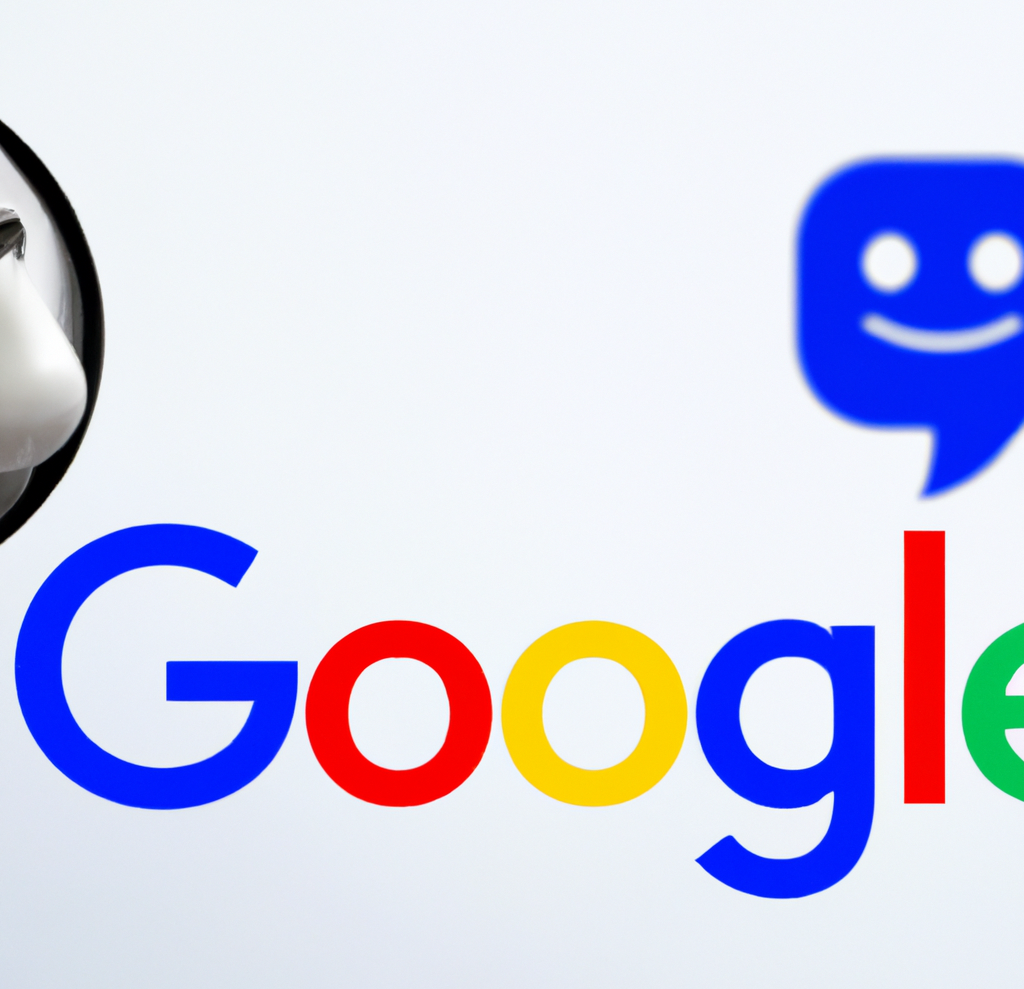Google’s Smith Algorithm Outperforms BERT

Google recently published a research paper on a new algorithm called SMITH that it claims outperforms BERT for understanding long queries and long documents. In particular, what makes this new model better is that it is able to understand passages within documents in the same way BERT understands words and sentences, which enables the algorithm to understand longer documents.
On November 3, 2020 I read about a Google algorithm called Smith that claims to outperform BERT. I briefly discussed it on November 25th in Episode 395 of the SEO 101 podcast in late November.
I’ve been waiting until I had some time to write a summary of it because SMITH seems to be an important algorithm and deserved a thoughtful write up, which I humbly attempted.
So here it is, I hope you enjoy it and if you do please share this article.
Is Google Using the SMITH Algorithm?
Google does not generally say what specific algorithms it is using. Although the researchers say that this algorithm outperforms BERT, until Google formally states that the SMITH algorithm is in use to understand passages within web pages, it is purely speculative to say whether or not it is in use.
What is the SMITH Algorithm?
SMITH is a new model for trying to understand entire documents. Models such as BERT are trained to understand words within the context of sentences.
In a very simplified description, the SMITH model is trained to understand passages within the context of the entire document.
While algorithms like BERT are trained on data sets to predict randomly hidden words are from the context within sentences, the SMITH algorithm is trained to predict what the next block of sentences are.
This kind of training helps the algorithm understand larger documents better than the BERT algorithm, according to the researchers.
BERT Algorithm Has Limitations
This is how they present the shortcomings of BERT:
“In recent years, self-attention based models like Transformers… and BERT …have achieved state-of-the-art performance in the task of text matching. These models, however, are still limited to short text like a few sentences or one paragraph due to the quadratic computational complexity of self-attention with respect to input text length.
In this paper, we address the issue by proposing the Siamese Multi-depth Transformer-based Hierarchical (SMITH) Encoder for long-form document matching. Our model contains several innovations to adapt self-attention models for longer text input.”
According to the researchers, the BERT algorithm is limited to understanding short documents. For a variety of reasons explained in the research paper, BERT is not well suited for understanding long-form documents.
The researchers propose their new algorithm which they say outperforms BERT with longer documents.
They then explain why long documents are difficult:
“…semantic matching between long texts is a more challenging task due to a few reasons:
1) When both texts are long, matching them requires a more thorough understanding of semantic relations including matching pattern between text fragments with long distance;
2) Long documents contain internal structure like sections, passages and sentences. For human readers, document structure usually plays a key role for content understanding. Similarly, a model also needs to take document structure information into account for better document matching performance;
3) The processing of long texts is more likely to trigger practical issues like out of TPU/GPU memories without careful model design.”
Larger Input Text
BERT is limited to how long documents can be. SMITH, as you will see further down, performs better the longer the document is.
This is a known shortcoming with BERT.
This is how they explain it:
“Experimental results on several benchmark data for long-form text matching… show that our proposed SMITH model outperforms the previous state-of-the-art models and increases the maximum input text length from 512 to 2048 when comparing with BERT based baselines.”
This fact of SMITH being able to do something that BERT is unable to do is what makes the SMITH model intriguing.
The SMITH model doesn’t replace BERT.
The SMITH model supplements BERT by doing the heavy lifting that BERT is unable to do.
The researchers tested it and said:
“Our experimental results on several benchmark datasets for long-form document matching show that our proposed SMITH model outperforms the previous state-of-the-art models including hierarchical attention…, multi-depth attention-based hierarchical recurrent neural network…, and BERT.
Comparing to BERT based baselines, our model is able to increase maximum input text length from 512 to 2048.”
Long to Long Matching
If I am understanding the research paper correctly, the research paper states that the problem of matching long queries to long content has not been been adequately explored.
According to the researchers:
“To the best of our knowledge, semantic matching between long document pairs, which has many important applications like news recommendation, related article recommendation and document clustering, is less explored and needs more research effort.”
Later in the document they state that there have been some studies that come close to what they are researching.
But overall there appears to be a gap in researching ways to match long queries to long documents. That is the problem the researchers are solving with the SMITH algorithm.
Details of Google’s SMITH
I won’t go deep into the details of the algorithm but I will pick out some general features that communicate a high level view of what it is.
The document explains that they use a pre-training model that is similar to BERT and many other algorithms.
First a little background information so the document makes more sense.
Algorithm Pre-training
Pre-training is where an algorithm is trained on a data set. For typical pre-training of these kinds of algorithms, the engineers will mask (hide) random words within sentences. The algorithm tries to predict the masked words.
As an example, if a sentence is written as, “Old McDonald had a ____,” the algorithm when fully trained might predict, “farm” is the missing word.
As the algorithm learns, it eventually becomes optimized to make less mistakes on the training data.
The pre-training is done for the purpose of training the machine to be accurate and make less mistakes.
Here’s what the paper says:
“Inspired by the recent success of language model pre-training methods like BERT, SMITH also adopts the “unsupervised pre-training + fine-tuning” paradigm for the model training.
For the Smith model pre-training, we propose the masked sentence block language modeling task in addition to the original masked word language modeling task used in BERT for long text inputs.”
Blocks of Sentences are Hidden in Pre-training
Here is where the researchers explain a key part of the algorithm, how relations between sentence blocks in a document are used for understanding what a document is about during the pre-training process.
“When the input text becomes long, both relations between words in a sentence block and relations between sentence blocks within a document becomes important for content understanding.
Therefore, we mask both randomly selected words and sentence blocks during model pre-training.”
The researchers next describe in more detail how this algorithm goes above and beyond the BERT algorithm.
What they’re doing is stepping up the training to go beyond word training to take on blocks of sentences.
Here’s how it is described in the research document:
“In addition to the masked word prediction task in BERT, we propose the masked sentence block prediction task to learn the relations between different sentence blocks.”
The SMITH algorithm is trained to predict blocks of sentences. My personal feeling about that is… that’s pretty cool.
This algorithm is learning the relationships between words and then leveling up to learn the context of blocks of sentences and how they relate to each other in a long document.
Section 4.2.2, titled, “Masked Sentence Block Prediction” provides more details on the process (research paper linked below).
Results of SMITH Testing
The researchers noted that SMITH does better with longer text documents.
“The SMITH model which enjoys longer input text lengths compared with other standard self-attention models is a better choice for long document representation learning and matching.”
In the end, the researchers concluded that the SMITH algorithm does better than BERT for long documents.
Why SMITH Research Paper is Important
One of the reasons I prefer reading research papers over patents is that the research papers share details of whether the proposed model does better than existing and state of the art models.
Many research papers conclude by saying that more work needs to be done. To me that means that the algorithm experiment is promising but likely not ready to be put into a live environment.
A smaller percentage of research papers say that the results outperform the state of the art. These are the research papers that in my opinion are worth paying attention to because they are likelier to make it into Google’s algorithm.
When I say likelier, I don’t mean that the algorithm is or will be in Google’s algorithm.
What I mean is that, relative to other algorithm experiments, the research papers that claim to outperform the state of the art are more likely to make it into Google’s algorithm.
SMITH Outperforms BERT for Long Form Documents
According to the conclusions reached in the research paper, the SMITH model outperforms many models, including BERT, for understanding long content.
“The experimental results on several benchmark datasets show that our proposed SMITH model outperforms previous state-of-the-art Siamese matching models including HAN, SMASH and BERT for long-form document matching.
Moreover, our proposed model increases the maximum input text length from 512 to 2048 when compared with BERT-based baseline methods.”
Is SMITH in Use?
As written earlier, until Google explicitly states they are using SMITH there’s no way to accurately say that the SMITH model is in use at Google.
That said, research papers that aren’t likely in use are those that explicitly state that the findings are a first step toward a new kind of algorithm and that more research is necessary.
This is not the case with this research paper. The research paper authors confidently state that SMITH beats the state of the art for understanding long-form content.
That confidence in the results and the lack of a statement that more research is needed makes this paper more interesting than others and therefore well worth knowing about in case it gets folded into Google’s algorithm sometime in the future or in the present.
Citation
Read the original research paper:
Description of the SMITH Algorithm
Download the SMITH Algorithm PDF Research Paper:
AI
Exploring the Evolution of Language Translation: A Comparative Analysis of AI Chatbots and Google Translate

According to an article on PCMag, while Google Translate makes translating sentences into over 100 languages easy, regular users acknowledge that there’s still room for improvement.
In theory, large language models (LLMs) such as ChatGPT are expected to bring about a new era in language translation. These models consume vast amounts of text-based training data and real-time feedback from users worldwide, enabling them to quickly learn to generate coherent, human-like sentences in a wide range of languages.
However, despite the anticipation that ChatGPT would revolutionize translation, previous experiences have shown that such expectations are often inaccurate, posing challenges for translation accuracy. To put these claims to the test, PCMag conducted a blind test, asking fluent speakers of eight non-English languages to evaluate the translation results from various AI services.
The test compared ChatGPT (both the free and paid versions) to Google Translate, as well as to other competing chatbots such as Microsoft Copilot and Google Gemini. The evaluation involved comparing the translation quality for two test paragraphs across different languages, including Polish, French, Korean, Spanish, Arabic, Tagalog, and Amharic.
In the first test conducted in June 2023, participants consistently favored AI chatbots over Google Translate. ChatGPT, Google Bard (now Gemini), and Microsoft Bing outperformed Google Translate, with ChatGPT receiving the highest praise. ChatGPT demonstrated superior performance in converting colloquialisms, while Google Translate often provided literal translations that lacked cultural nuance.
For instance, ChatGPT accurately translated colloquial expressions like “blow off steam,” whereas Google Translate produced more literal translations that failed to resonate across cultures. Participants appreciated ChatGPT’s ability to maintain consistent levels of formality and its consideration of gender options in translations.
The success of AI chatbots like ChatGPT can be attributed to reinforcement learning with human feedback (RLHF), which allows these models to learn from human preferences and produce culturally appropriate translations, particularly for non-native speakers. However, it’s essential to note that while AI chatbots outperformed Google Translate, they still had limitations and occasional inaccuracies.
In a subsequent test, PCMag evaluated different versions of ChatGPT, including the free and paid versions, as well as language-specific AI agents from OpenAI’s GPTStore. The paid version of ChatGPT, known as ChatGPT Plus, consistently delivered the best translations across various languages. However, Google Translate also showed improvement, performing surprisingly well compared to previous tests.
Overall, while ChatGPT Plus emerged as the preferred choice for translation, Google Translate demonstrated notable improvement, challenging the notion that AI chatbots are always superior to traditional translation tools.
Source: https://www.pcmag.com/articles/google-translate-vs-chatgpt-which-is-the-best-language-translator
Google Implements Stricter Guidelines for Mass Email Senders to Gmail Users

Beginning in April, Gmail senders bombarding users with unwanted mass emails will encounter a surge in message rejections unless they comply with the freshly minted Gmail email sender protocols, Google cautions.
Fresh Guidelines for Dispatching Mass Emails to Gmail Inboxes In an elucidative piece featured on Forbes, it was highlighted that novel regulations are being ushered in to shield Gmail users from the deluge of unsolicited mass emails. Initially, there were reports surfacing about certain marketers receiving error notifications pertaining to messages dispatched to Gmail accounts. Nonetheless, a Google representative clarified that these specific errors, denoted as 550-5.7.56, weren’t novel but rather stemmed from existing authentication prerequisites.
Moreover, Google has verified that commencing from April, they will initiate “the rejection of a portion of non-compliant email traffic, progressively escalating the rejection rate over time.” Google elaborates that, for instance, if 75% of the traffic adheres to the new email sender authentication criteria, then a portion of the remaining non-conforming 25% will face rejection. The exact proportion remains undisclosed. Google does assert that the implementation of the new regulations will be executed in a “step-by-step fashion.”
This cautious and methodical strategy seems to have already kicked off, with transient errors affecting a “fraction of their non-compliant email traffic” coming into play this month. Additionally, Google stipulates that bulk senders will be granted until June 1 to integrate “one-click unsubscribe” in all commercial or promotional correspondence.
Exclusively Personal Gmail Accounts Subject to Rejection These alterations exclusively affect bulk emails dispatched to personal Gmail accounts. Entities sending out mass emails, specifically those transmitting a minimum of 5,000 messages daily to Gmail accounts, will be mandated to authenticate outgoing emails and “refrain from dispatching unsolicited emails.” The 5,000 message threshold is tabulated based on emails transmitted from the same principal domain, irrespective of the employment of subdomains. Once the threshold is met, the domain is categorized as a permanent bulk sender.
These guidelines do not extend to communications directed at Google Workspace accounts, although all senders, including those utilizing Google Workspace, are required to adhere to the updated criteria.
Augmented Security and Enhanced Oversight for Gmail Users A Google spokesperson emphasized that these requisites are being rolled out to “fortify sender-side security and augment user control over inbox contents even further.” For the recipient, this translates to heightened trust in the authenticity of the email sender, thus mitigating the risk of falling prey to phishing attempts, a tactic frequently exploited by malevolent entities capitalizing on authentication vulnerabilities. “If anything,” the spokesperson concludes, “meeting these stipulations should facilitate senders in reaching their intended recipients more efficiently, with reduced risks of spoofing and hijacking by malicious actors.”
Google’s Next-Gen AI Chatbot, Gemini, Faces Delays: What to Expect When It Finally Launches

In an unexpected turn of events, Google has chosen to postpone the much-anticipated debut of its revolutionary generative AI model, Gemini. Initially poised to make waves this week, the unveiling has now been rescheduled for early next year, specifically in January.
Gemini is set to redefine the landscape of conversational AI, representing Google’s most potent endeavor in this domain to date. Positioned as a multimodal AI chatbot, Gemini boasts the capability to process diverse data types. This includes a unique proficiency in comprehending and generating text, images, and various content formats, even going so far as to create an entire website based on a combination of sketches and written descriptions.
Originally, Google had planned an elaborate series of launch events spanning California, New York, and Washington. Regrettably, these events have been canceled due to concerns about Gemini’s responsiveness to non-English prompts. According to anonymous sources cited by The Information, Google’s Chief Executive, Sundar Pichai, personally decided to postpone the launch, acknowledging the importance of global support as a key feature of Gemini’s capabilities.
Gemini is expected to surpass the renowned ChatGPT, powered by OpenAI’s GPT-4 model, and preliminary private tests have shown promising results. Fueled by significantly enhanced computing power, Gemini has outperformed GPT-4, particularly in FLOPS (Floating Point Operations Per Second), owing to its access to a multitude of high-end AI accelerators through the Google Cloud platform.
SemiAnalysis, a research firm affiliated with Substack Inc., expressed in an August blog post that Gemini appears poised to “blow OpenAI’s model out of the water.” The extensive compute power at Google’s disposal has evidently contributed to Gemini’s superior performance.
Google’s Vice President and Manager of Bard and Google Assistant, Sissie Hsiao, offered insights into Gemini’s capabilities, citing examples like generating novel images in response to specific requests, such as illustrating the steps to ice a three-layer cake.
While Google’s current generative AI offering, Bard, has showcased noteworthy accomplishments, it has struggled to achieve the same level of consumer awareness as ChatGPT. Gemini, with its unparalleled capabilities, is expected to be a game-changer, demonstrating impressive multimodal functionalities never seen before.
During the initial announcement at Google’s I/O developer conference in May, the company emphasized Gemini’s multimodal prowess and its developer-friendly nature. An application programming interface (API) is under development, allowing developers to seamlessly integrate Gemini into third-party applications.
As the world awaits the delayed unveiling of Gemini, the stakes are high, with Google aiming to revolutionize the AI landscape and solidify its position as a leader in generative artificial intelligence. The postponed launch only adds to the anticipation surrounding Gemini’s eventual debut in the coming year.
-

 SEO7 days ago
SEO7 days agoGoogle Limits News Links In California Over Proposed ‘Link Tax’ Law
-

 SEARCHENGINES6 days ago
SEARCHENGINES6 days agoGoogle Core Update Volatility, Helpful Content Update Gone, Dangerous Google Search Results & Google Ads Confusion
-
SEARCHENGINES7 days ago
Daily Search Forum Recap: April 12, 2024
-

 SEO6 days ago
SEO6 days ago10 Paid Search & PPC Planning Best Practices
-

 MARKETING6 days ago
MARKETING6 days ago2 Ways to Take Back the Power in Your Business: Part 2
-

 MARKETING4 days ago
MARKETING4 days ago5 Psychological Tactics to Write Better Emails
-

 SEARCHENGINES5 days ago
SEARCHENGINES5 days agoWeekend Google Core Ranking Volatility
-

 PPC6 days ago
PPC6 days agoCritical Display Error in Brand Safety Metrics On Twitter/X Corrected














